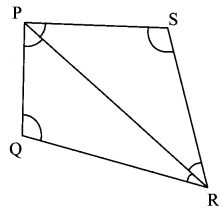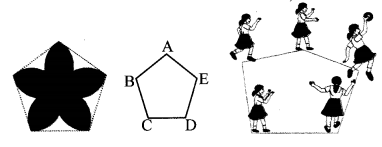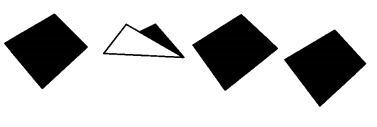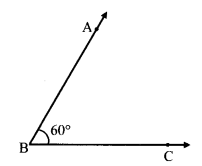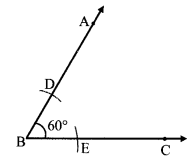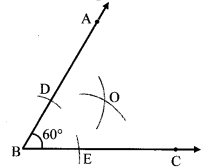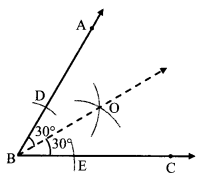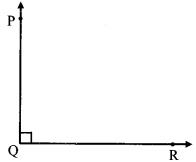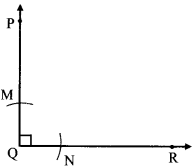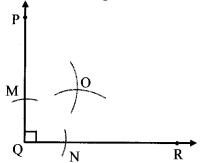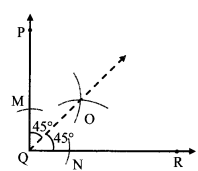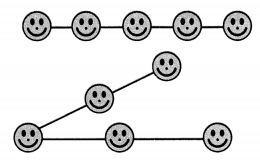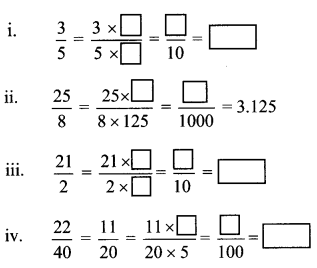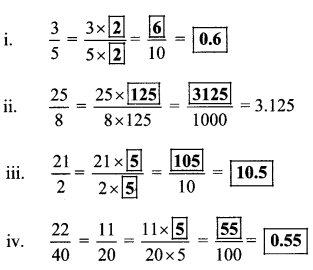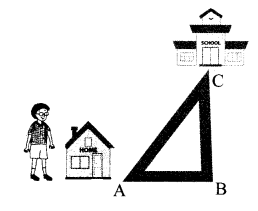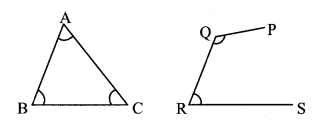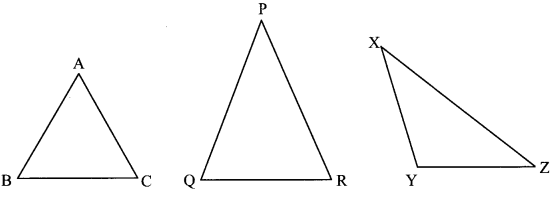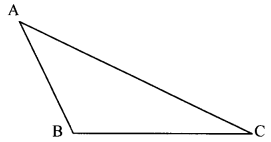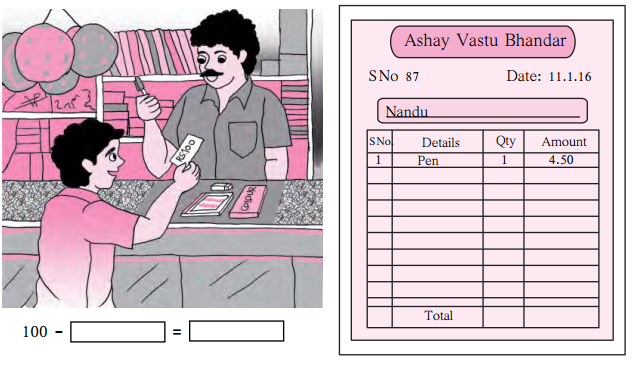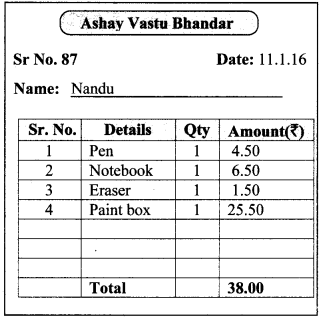Balbharti Maharashtra State Board Class 6 History Solutions Chapter 2 Sources of History Notes, Textbook Exercise Important Questions and Answers.
Maharashtra Board Class 6 History Solutions Chapter 2 Sources of History
Class 6 History Chapter 2 Sources of History Textbook Questions and Answers
1. Answer in one sentence:
Question 1.
In the past, what materials were used for writing?
Answer:
In the past, materials like potsherds, unbaked bricks, bark of birch trees and copper plates were used for writing.
Question 2.
What information is obtained from Vedic literature?
Answer:
We come to know of life of man and ancient Indian History from the Vedic literature.
![]()
Question 3.
Which literature is preserved by oral tradition?
Answer:
Owis, folk songs, folk tales and similar literature is preserved by oral tradition.
2. Classify the following sources as material, written and oral sources.
Copper-plate, folk tales, pottery, beads, travelogues, owis, inscriptions, Vedic literature, stupa, coin, Puranas
| Material sources | Written sources | Oral sources |
Answer:
| Material sources | Written sources | Oral sources |
| pottery | copper-plate | folk tales |
| beads | travelogues | owis |
| stupa | inscriptions | |
| coins | vedic literatures | |
| puranas |
3. Observe the picture of earthen pots and try to make similar ones.
4. Observe any coin and note the following things.
Answer:
- Inscription on the coin: Picture of Queen Victoria
- Metal used: Gold
- Year of the coin: 1862
- Symbol on the coin: Queen Victoria
- Picture, language, shape, and denomination of the coin: Queen Victoria, English, round, denomination as per size of the coin.
5. Do you know a few things by heart? Present them in your group
Activity:
Collect pictures /photos of material and written sources and exhibit them.
Class 6 History Chapter 2 Sources of History Additional Important Questions and Answers
Complete the sentence by choosing the correct option:
Question 1.
A number of objects used by our ancestors still _____.
(a) exist
(b) diminish
(c) exhausted
Answer:
exist
![]()
Question 2.
______ can also be learnt through customs and traditions, folk arts, folk literature as well as historical documents.
(a) Science
(b) History
(c) Astrology
Answer:
History
Question 3.
______ used by human in the past, provide us with valuable information about life in the ancient times.
(a) Clothes
(b) Cows
(c) Artefacts
Answer:
Artefacts
Question 4.
The ornaments and other artefacts throw light on ______ interaction.
(a) political
(b) social
(c) historical
Answer:
social
Question 5.
We get information about the __________ of the people from the remains of foodgrains, seeds and bones of animals found in excavations.
(a) diet
(b) health
(c) illness
Answer:
diet
Question 6.
Artefacts, articles, monuments or their ruins are called the ______ ‘sources’ of history.
(a) oral
(b) written
(c) material
Answer:
material
Question 7.
The Stone Age people have recorded many events and expressed their _______ in paintings on rocks.
(a) emotions
(b) opinion
(c) views
Answer:
emotions
![]()
Question 8.
In the beginning, man wrote on potsherds, unbaked bricks using ________ objects.
(a) blunt
(b) pointed
(c) zigzag
Answer:
pointed
Question 9.
Man began to record the _______ that took place around him.
(a) competitions
(b) points
(c) events
Answer:
events
Question 10.
Many rulers had their orders, judicial decisions, donations, etc., inscribed on stone or _______.
(a) gold-plates
(b) copper-plates
(c) press plates
Answer:
copper-plates
Question 11.
________ means writing sheets made from the bark of a birch tree.
(a) Bhurjapatra
(b) Paper
(c) Book
Answer:
Bhurjapatra
Question 12.
Birch trees are found in _______.
(a) Jammu
(b) Delhi
(c) Kashmir
Answer:
Kashmir
Question 13.
We learn about the Stone Age period of Indian history through _____ excavations.
(a) physical
(b) archaeological
(c) astrological
Answer:
archaeological
![]()
Question 14.
In the beginning, the vedas were not in the ________ form.
(a) oral
(b) written
(c) material
Answer:
written
Question 15.
The vedas and the post Vedic literature form an ______ source of ancient Indian History.
(a) important
(b) unimportant
(c) written
Answer:
important
Match the following:
| Column (A) | Column (B) |
| (1) Material (2) Written (3) Oral (4) Pillar inscriptions | (a) Upanishad (b) Folk tales (c) Coins (d) The vedas |
Answer:
1 – c
2 – a
3 – b
4 – d
Answer in one sentence:
Question 1.
What are ‘sources of History’?
Answer:
History can be learnt through customs and traditions, folk arts, folk literature as well as historical documents. All these are known as ‘Sources of History’.
Question 2.
How are artefacts useful?
Answer:
Artefacts are useful as they provide us with valuable information about life in the ancient times.
Question 3.
What are artefacts?
Answer:
Things used by man in his day-to-day life are known as artefacts.
Question 4.
What throws light on the social interaction of ancient man?
Answer:
The ornaments and other artefacts throw light on the social interaction of ancient man.
![]()
Question 5.
How do we get information about the diet of the ancient people?
Answer:
We get information about the diet of the ancient people from the remains of foodgrains, seeds and bones of animals found in excavation.
Question 6.
What are ‘material sources’ of History?
Answer:
Artefacts, articles, monuments or their ruins are called the ‘material sources’ of history.
Question 7.
What are copper-plates?
Answer:
Copper plates are actual plates made of copper which the rulers used to inscribe their orders, judicial decisions, donations, etc.
Question 8.
What are ‘oral sources’ of history?
Answer:
Owis, folk songs, folk tales and similar literature that is not written but passed on from generation to generation by word of mouth are oral sources of history.
Question 9.
How were vedas preserved before it was put in written form?
Answer:
Before the vedas were written, the ancient Indian had developed the technique of memorizing and reciting them.
Answer the following questions in short:
Question 1.
How did man record events before the art of writing?
Answer:
- The stone age people have recorded many events and expressed their emotions in paintings on rocks
- It was only after thousands of years that man learnt the art of writing.
Question 2.
Write a short note on ‘written sources’ of history.
Answer:
- Man began to record the events that took place around him.
- Over a period of time, many forms of literature developed like books on religious and social subjects, plays, poetry, travelogues and scientific works
- All this literature helps us to understand the history of the various historical periods.
- These sources are known as ‘written sources of history’.
Question 3.
Why should precautions be taken while writing history?
Answer:
- A written document cannot be said to be authentic just because it is old.
- It needs to be examined critically as to who wrote it, why and when it was written
- The conclusions drawn on the basis of various genuine documents have to be cross-checked and corroborated with one another
- Such a critical analysis is very important in the writing of authentic history.
![]()
Can you tell?
Structures such as forts, rock-cut caves, stupa etc. are known as material sources of history.
Try to guess what other structures can be called material sources.
Answer:
Coins, potsherd, earthern pot, ornaments or any kind of ancient artefacts can also be called material source.


